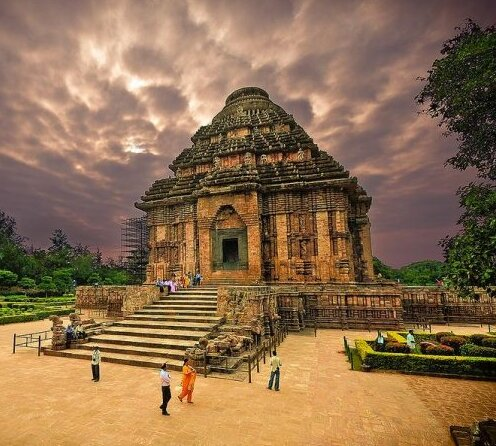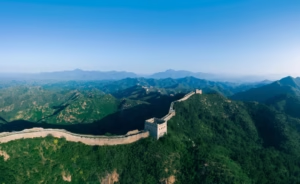Konark Sun Temple: Timeless Marvel of Indian Architecture

Nestled on the eastern coastline of Odisha, near Puri, the Konark Sun Temple is a monumental celebration of art, astronomy, mythology, and devotion. Dating back to the 13th century, this UNESCO World Heritage Site showcases the extraordinary craftsmanship of the Eastern Ganga dynasty and remains a testament to India’s rich cultural heritage.
Historical Origins
Foundations and Patronage
- King Narasimhadeva I (1238–1264 CE) of the Eastern Ganga dynasty commissioned the temple around 1250 CE.
- Textual evidence and sculptural motifs depicting military victories—likely over Muslim forces in Bengal—suggest the temple’s dual purpose: worship and assertion of dynastic supremacy.
Myth and Legend
- According to the Bhavishya Purana, the site—once known as Mitravana—is said to house a Sun temple built by Samba (Krishna’s son) as penance for leprosy.
- A legend recounts that the temple’s chief architect, Bisu Maharana, faced execution if work on the crowning element failed. His young son Dharmapada, in a dramatic act, completed the work overnight and leapt into the sea to save her life.
Architectural Marvel
Chariot Design and Symbolism
- The temple is carved as a colossal stone chariot: 24 wheels (symbolizing months/day cycles) drawn by seven horses (days/colors of sunlight).
- Each wheel is approximately 10–12 feet in diameter, with eight spokes marking the traditional praharas (3-hour day divisions).
Temple Layout
Three key structural elements define the original layout:
- Vimana (sanctum with towering shikhara ~229 ft), now mostly collapsed .
- Jagamohana (assembly/prayer hall), still standing but sealed with sand inside since 1903 to prevent collapse.
- Natya Mandapa (dance hall): surmounted by elegant pillars and elaborate carvings of dancers/musicians
Material & Engineering
- Built using local stones: laterite (walls), khondalite (structure), and chlorite (doorframes), assembled with iron clamps.
- The chariot aligns east-west so that first rays of sun hit the main gateway at dawn, and the wheels served practically as sundials.
Engineering Mysteries
- European visitors reported a lodestone at the temple’s peak, possibly causing magnetic anomalies—its removal is often blamed for structural failure.
- Intricate drainage channels within the foundation diverted rainwater effectively—a sophisticated feature for the era .

Sculptural Grandeur
Erotic & Everyday Life Scenes
- The outer walls teem with carvings—erotic mithuna scenes, celestial nymphs, warriors, dancers, musicians, animals, flora, and fauna—reflecting the societal tapestry of medieval Odisha.
Iconography of Time & Power
- Friezes depicting royal hunts and battles highlight the king’s valor, while symbolic use of lions crushing elephants and humans underscores cosmic dominance and moral allegory.
Divine Representations
- Statues honor Surya with lotus and conch, flanked by smaller shrines dedicated to Shiva and Vishnu
https://sypertimes.com/jagannath-temple-legacy-of-faith-culture-and-unity/
Cultural Resonance
Religious Importance
- Though worship ceased after the temple’s partial collapse in the 17th century—amplified by Mughal iconoclasm—the site endures as a potent spiritual landmark .
Literary & National Heritage
- The temple inspired poet Rabindranath Tagore to remark: “Here the language of stone surpasses the language of man”
- It appears on India’s ₹10 note and Odisha’s state emblem – the galloping chariot horse.
Festivals & Performances
- Chandrabhaga Mela (Magha Saptami, January/February): devotees partake in holy dips nearby
- Konark Dance Festival (1–5 December): classical performances—Odissi, Bharatanatyam—against the temple’s backdrop.
- International Sand Art Festival on Chandrabhaga Beach exhibits global artistry linked to the temple’s themes.
Decline & Conservation
Causes of Decline
- Coastal erosion, groundwater corrosion, vegetation overgrowth, and removal of the shikhara all contributed to ruin.
- Temple desecration during Mughal incursions further accelerated its deterioration .
Preservation Efforts
- Designated a UNESCO World Heritage Site in 1984.
- ASI filled the Jagamohana with sand in 1903 to avert collapse; they began careful excavation and restoration in 2020–22.
- Restoration now includes laser cleaning, chemical stone stabilization, lime mortar repairs, and detailed 3D documentation under UNESCO and ASI guidance.
Visitor Experience
When to Go
- The best visiting window is October to March, offering mild, pleasant weather.
- Dawn or dusk visits are particularly evocative for capturing the temple bathed in golden light.
How to Reach
- By air: Biju Patnaik Airport (Bhubaneswar), ~60 km away.
- By rail: Nearest station is Puri (~35 km) with extensive rail connectivity.
On-site Amenities
- Light & Sound shows in English, Hindi, Odia (excluding Mondays)
- Adjacent ASI museum showcases archaeological findings and temple history.
- Souvenir stalls feature Konark chakra motifs, Patta Chitra paintings, and appliqué crafts.

Beyond the Temple
Konark’s Cultural Landscape
- Part of Odisha’s “Golden Triangle”—alongside Puri (Jagannath Temple) and Bhubaneswar (Lingaraj Temple)—linking myth, astronomy, and spirituality.
- Nearby: Chandrabhaga Beach, Raghurajpur Artist Village, and local wildlife, adding environmental and artisanal charm.
Local Traditions
- The traditional folk village of Raghurajpur showcases the indigenous art of Pattachitra and palm-leaf illustration.
- Regional cuisine, crafts, and coastal life enrich the visitor’s cultural immersion.
Legacy & Influence
Architectural Impact
- Konark’s chariot form inspired structures such as the Lotus Temple in Delhi and the Konark Wheel on Parliament House.
Modern Cultural Symbol
- Appears on stamps, paintings, documentaries, and serves as a recurring motif in Indian cinema and literature .
Closing Reflection
The Konark Sun Temple stands not merely as an archaeological relic, but as a living tableau of medieval ingenuity, devotional fervor, celestial knowledge, and poetic symbolism. Even in its ruination, its sculpted wheels still seem to turn, echoing the eternal cycle of time and the cosmic journey of Surya.
Preserved and celebrated through festivals and conservation, Konark’s heritage extends far beyond its walls—a chariot of culture that continues its timeless journey across centuries.




